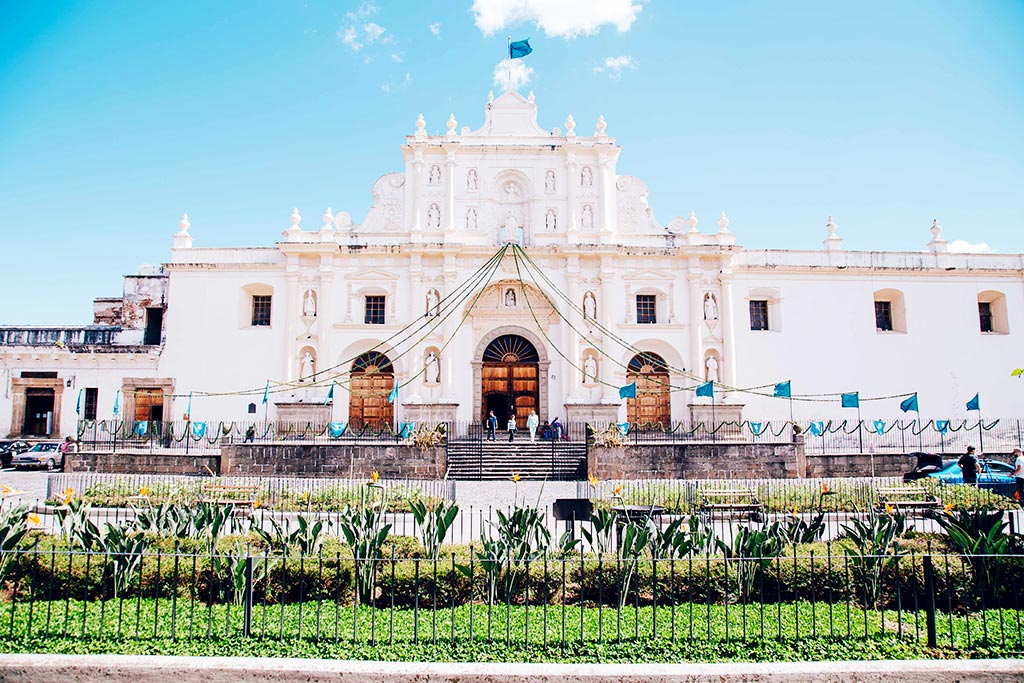Antigua is a UNESCO World Heritage Site and former capital of the Kingdom of Guatemala, the name given to an administrative division of the Spanish Empire that was made up of Guatemala, Nicaragua, Costa Rica, Honduras, El Salvador, Belize and the Mexican state of Chiapas.
This colonial town is Guatemala's most visited tourist destination in part due to its location 25 miles from Guatemala City, the nation's current capital. Antigua is very safe and offers reliable transportation options across a diverse country that spans from jungles to highlands.

Spanish Conquest
Antigua was founded by Spanish Conquistadors on March 10th, 1543 during the conquest of the Maya Civilization. The location became the third of four capitals of the Kingdom of Guatemala after the others became uninhabitable, the first due to Maya rebellions and the second due to the eruption of Volcan de Agua, one of Guatemala's many volcanoes.
Antigua was plagued by earthquakes throughout its history, culminating in three major events during the 18th century: the San Miguel earthquakes in 1717, the San Casimiro earthquakes in 1751 and the Santa Marta earthquakes in 1773. Each of these events destroyed much of Antigua and required considerable sums of money to repair buildings and infrastructure.
In 1776, the Spanish Crown ordered Antigua to be abandoned and the capital to be moved to a location named the Valley of the Shrine, which is now Guatemala City. Some residents stayed behind and began rebuilding the demolished city, causing it to become known as Antigua Guatemala (Old Guatemala).

Spanish Architecture
Spain introduced their own style of architecture to most of Latin America during the Spanish conquests of the Americas in the 16th century. Spanish Architecture within Latin America generally consists of grand central plazas, elaborate churches, colorful buildings made from stucco, cobblestone streets and an urban plan that consists of perfectly perpendicular street layouts. All buildings on a specific block are connected by means of a shared wall and often have stylish metal bars covering the windows.

The most iconic piece of architecture in all of Guatemala is Antigua's Arco de Santa Catalina, an arch built in the 17th century as a way to connect a convent with a school across the street.

The best free activity that one can do in Antigua is to visit Cerro de la Crux, a cross located on a hill with a sweeping panoramic view of the city and of Volcan de Agua in the background. While it's a bit of a hike to get up there (the altitude doesn't help), Cerro de la Crux is a great location to spend a few hours relaxing and admiring the stunning view. There are also many vendors on the hill who sell food and drinks. Just don't forget to bring a camera!

Spanish Convents
The Convento de las Capuchinas is an 18th century convent and church that was severely damaged during the 1751 and 1773 earthquakes. It costs about $5 to enter and tour the somewhat restored building. As you walk around the convent, you can see the direct impact of the 18th century earthquakes as many walls are in a state of permanent disrepair. Some rooms have been turned into a museum with information on the convent and Antigua in general.
The Convento de las Capuchinas is not the only convent that you can visit in Antigua. In fact, there are numerous others that can be visited for very small fees.

Antigua is a safe and historic town that any visitor will likely find fascinating. It's surprisingly quiet and relatively void of crowds, making it the perfect colonial destination in Central America.
Tour the convents, admire the architecture, enjoy the food and experience this fascinating blend of Spanish and Maya influences.
Antigua Drone Footage











